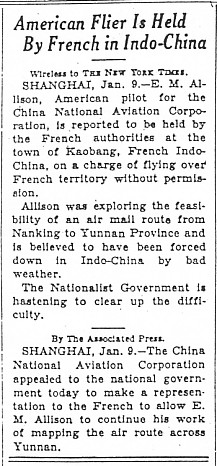It's amazing how well-preserved these bombers are!
To: whyilovetexas111
Somehow I never knew Kokura was the primary target of Fat Man.
2 posted on
08/08/2025 6:03:57 AM PDT by
TheThirdRuffian
(Orange is the new brown)
To: whyilovetexas111
Took M’boy up for a flight in the B-29 “Doc” a month or two ago. It was his first ever flight in anything. I think that’s a pretty cool talking point for future him when the subject comes up. I don’t know how much longer Doc and FIFI will be flying in the years ahead.
3 posted on
08/08/2025 6:28:37 AM PDT by
TalBlack
(Their god is government. Prepare for a religious war.https://freerepublic.com/perl/post?id=4322961%2)
To: whyilovetexas111; TheThirdRuffian; TalBlack
4 posted on
08/08/2025 6:33:30 AM PDT by
rlmorel
(Factio Communistica Sinensis Delenda Est.)
To: whyilovetexas111
The third one was gonna be named “Hot Mama”.
8 posted on
08/08/2025 7:03:25 AM PDT by
Macoozie
(Roll MAGA, roll!)
To: whyilovetexas111
The saga of Bockscar on its mission to drop the bomb is a very fascinating read.
10 posted on
08/08/2025 7:06:54 AM PDT by
wjcsux
(On 3/14/1883 Karl Marx gave humanity his best gift, he died. )
To: whyilovetexas111
I’ve seen Boxcar at the Dayton, OH AF museum and saw Fifi in Colorado.
I’d love to take a flight in Fifi or Doc someday.
14 posted on
08/08/2025 7:28:52 AM PDT by
Zathras
To: whyilovetexas111
Dropping the bomb was the correct decision at that time.
Anyone who says otherwise wasn’t on those ships headed to Japan for an invasion, which would have meant a massive loss of American lives, most of them young men.
After the bomb was dropped, those ships were turned around at sea and headed home - the war was over! I can’t even imagine the relief those men and their families felt.
Our family lost one of those young men, a pilot of a B-27 Marauder that was shot down, he was killed at age 23. My grandmother never recovered.
15 posted on
08/08/2025 7:29:27 AM PDT by
Bon of Babble
(You Say You Want a Revolutioan?)
To: whyilovetexas111
At the time, my father was stationed at Tinian, but he never talked about it, despite my many many inquiries.
I finally learned not to ask.
To: whyilovetexas111
Tomorrow is “Nagasaki Day”!
20 posted on
08/08/2025 9:45:49 AM PDT by
packrat35
(Pureblood! No clot shot for me!)
To: whyilovetexas111
The intended target for the Hiroshima atomic bomb as the Aioi Bridge. The bomb detonated about 800 feet southeast of the bridge.
For the Nagasaki mission, Bockscar was running out of fuel so Major Sweeney was preparing to turn back towards Okinawa. At the last second a hole opened in the clouds and Bombardier Captain Beahan announced that he could see his target. The primary target Kokura was saved to due cloud cover. Nagasaki got the short straw due to a last second break in the clouds. The bomb exploded almost directly above the Mitsubishi factories.
Critically low on fuel, Bockscar barely made it to the runway at Yontan Airfield on Okinawa. The number two engine died from fuel starvation as Bockscar began its final approach.
26 posted on
08/08/2025 10:41:54 AM PDT by
DFG
To: whyilovetexas111
28 posted on
08/08/2025 10:47:07 AM PDT by
DFG
To: whyilovetexas111
To: whyilovetexas111; rlmorel
The story of ERNEST M. ALLISON (1894 - 1976)(CNAC Pilot 1929-1937 and Operations Manager 1947-1949)
[CNAC = China National Aviation Corporation]
In a book, Yankee on the Yangtze by his daughter, Nancy Allison Wright.
Excerpts from the webpage:
1934:

1940 employed by CNAC as inspector/test pilot for rebuilding of five Condors, Glendale, California for use in freight. Purchased new DC-3 for CNAC.
January 25, 1941 became president of Harlow Aircraft Company of Glendale.
June 25, 1942 took temporary job organizing new company, Arizona Gliding Academy.
July 1942 Boeing production test pilot of B-17s in Seattle.
June 1943 - November 1945 Boeing chief test pilot for B-29 in Wichita.
February 1947 returned to China as CNAC operations manager.
37 posted on
08/08/2025 11:26:37 PM PDT by
linMcHlp
FreeRepublic.com is powered by software copyright 2000-2008 John Robinson
